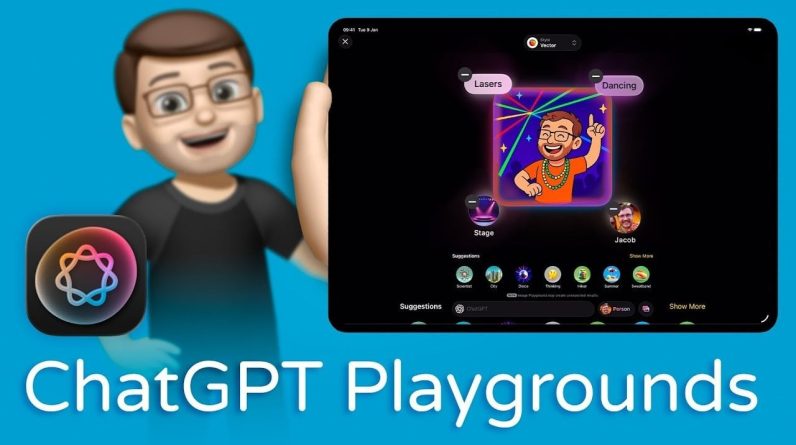
Top 18 Free AI Courses by NVIDIA in 2024
NVIDIA is one of the most influential hardware giants in the world. Apart from its much sought-after GPUs, the company also provides free courses to help you understand more about generative AI, GPU, robotics, chips, and more.
Most importantly, all of these are available free of cost and can be completed in less than a day. Let’s take a look at them.
1. Accelerating Data Science Workflows with Zero Code Changes
Efficient data management and analysis are crucial for companies in software, finance, and retail. Traditional CPU-driven workflows are often cumbersome, but GPUs enable faster insights, driving better business decisions.
In this workshop, one will learn to build and execute end-to-end GPU-accelerated data science workflows for rapid data exploration and production deployment. Using RAPIDS™-accelerated libraries, one can apply GPU-accelerated machine learning algorithms, including XGBoost, cuGraph’s single-source shortest path, and cuML’s KNN, DBSCAN, and logistic regression.
More details on the course can be checked here –
2. Generative AI Explained
This self-paced, free online course introduces generative AI fundamentals, which involve creating new content based on different inputs. Through this course, participants will grasp the concepts, applications, challenges, and prospects of generative AI.
Learning objectives include defining generative AI and its functioning, outlining diverse applications, and discussing the associated challenges and opportunities. All you need to participate is a basic understanding of machine learning and deep learning principles.
To learn the course and know more in detail check it out here –
3. Digital Fingerprinting with Morpheus
This one-hour course introduces participants to developing and deploying the NVIDIA digital fingerprinting AI workflow, providing complete data visibility and significantly reducing threat detection time.
Participants will gain hands-on experience with the NVIDIA Morpheus AI Framework, designed to accelerate GPU-based AI applications for filtering, processing, and classifying large volumes of streaming cybersecurity data.
Additionally, they will learn about the NVIDIA Triton Inference Server, an open-source tool that facilitates standardised deployment and execution of AI models across various workloads. No prerequisites are needed for this tutorial, although familiarity with defensive cybersecurity concepts and the Linux command line is beneficial.
To learn the course and know more in detail check it out here –
4. Building A Brain in 10 Minutes
This course delves into neural networks’ foundations, drawing from biological and psychological insights. Its objectives are to elucidate how neural networks employ data for learning and to grasp the mathematical principles underlying a neuron’s functioning.
While anyone can execute the code provided to observe its operations, a solid grasp of fundamental Python 3 programming concepts—including functions, loops, dictionaries, and arrays—is advised. Additionally, familiarity with computing regression lines is also recommended.
To learn the course and know more in detail check it out here –
5. An Introduction to CUDA
This course delves into the fundamentals of writing highly parallel CUDA kernels designed to execute on NVIDIA GPUs.
One can gain proficiency in several key areas: launching massively parallel CUDA kernels on NVIDIA GPUs, orchestrating parallel thread execution for large dataset processing, effectively managing memory transfers between the CPU and GPU, and utilising profiling techniques to analyse and optimise the performance of CUDA code.
Here is the link to know more about the course –
6. Building A Brain in 10 Minutes
This course delves into neural networks’ foundations, drawing from biological and psychological insights. Its objectives are to elucidate how neural networks employ data for learning and to grasp the mathematical principles underlying a neuron’s functioning.
While anyone can execute the code provided to observe its operations, a solid grasp of fundamental Python 3 programming concepts—including functions, loops, dictionaries, and arrays—is advised. Additionally, familiarity with computing regression lines is also recommended.
To learn the course and know more in detail check it out here –
7. Augment your LLM Using RAG
Retrieval Augmented Generation (RAG), devised by Facebook AI Research in 2020, offers a method to enhance a LLM output by incorporating real-time, domain-specific data, eliminating the need for model retraining. RAG integrates an information retrieval module with a response generator, forming an end-to-end architecture.
Drawing from NVIDIA’s internal practices, this introduction aims to provide a foundational understanding of RAG, including its retrieval mechanism and the essential components within NVIDIA’s AI Foundations framework. By grasping these fundamentals, you can initiate your exploration into LLM and RAG applications.
To learn the course and know more in detail check it out here –
8. Getting Started with AI on Jetson Nano
The NVIDIA Jetson Nano Developer Kit empowers makers, self-taught developers, and embedded technology enthusiasts worldwide with the capabilities of AI.
This user-friendly, yet powerful computer facilitates the execution of multiple neural networks simultaneously, enabling various applications such as image classification, object detection, segmentation, and speech processing.
Throughout the course, participants will utilise Jupyter iPython notebooks on Jetson Nano to construct a deep learning classification project employing computer vision models.
By the end of the course, individuals will possess the skills to develop their own deep learning classification and regression models leveraging the capabilities of the Jetson Nano.
Here is the link to know more about the course –
9. Building Video AI Applications at the Edge on Jetson Nano
This self-paced online course aims to equip learners with skills in AI-based video understanding using the NVIDIA Jetson Nano Developer Kit. Through practical exercises and Python application samples in JupyterLab notebooks, participants will explore intelligent video analytics (IVA) applications leveraging the NVIDIA DeepStream SDK.
The course covers setting up the Jetson Nano, constructing end-to-end DeepStream pipelines for video analysis, integrating various input and output sources, configuring multiple video streams, and employing alternate inference engines like YOLO.
Prerequisites include basic Linux command line familiarity and understanding Python 3 programming concepts. The course leverages tools like DeepStream, TensorRT, and requires specific hardware components like the Jetson Nano Developer Kit. Assessment is conducted through multiple-choice questions, and a certificate is provided upon completion.
For this course, you will require hardware including the NVIDIA Jetson Nano Developer Kit or the 2GB version, along with compatible power supply, microSD card, USB data cable, and a USB webcam.
To learn the course and know more in detail check it out here –
10. Build Custom 3D Scene Manipulator Tools on NVIDIA Omniverse
This course offers practical guidance on extending and enhancing 3D tools using the adaptable Omniverse platform. Taught by the Omniverse developer ecosystem team, participants will gain skills to develop advanced tools for creating physically accurate virtual worlds.
Through self-paced exercises, learners will delve into Python coding to craft custom scene manipulator tools within Omniverse. Key learning objectives include launching Omniverse Code, installing/enabling extensions, navigating the USD stage hierarchy, and creating widget manipulators for scale control.
The course also covers fixing broken manipulators and building specialised scale manipulators. Required tools include Omniverse Code, Visual Studio Code, and the Python Extension. Minimum hardware requirements comprise a desktop or laptop computer equipped with an Intel i7 Gen 5 or AMD Ryzen processor, along with an NVIDIA RTX Enabled GPU with 16GB of memory.
To learn the course and know more in detail check it out here –
11. Getting Started with USD for Collaborative 3D Workflows
In this self-paced course, participants will delve into the creation of scenes using human-readable Universal Scene Description ASCII (USDA) files.
The programme is divided into two sections: USD Fundamentals, introducing OpenUSD without programming, and Advanced USD, using Python to generate USD files.
Participants will learn OpenUSD scene structures and gain hands-on experience with OpenUSD Composition Arcs, including overriding asset properties with Sublayers, combining assets with References, and creating diverse asset states using Variants.
To learn more about the details of the course, here is the link –
12. Assemble a Simple Robot in Isaac Sim
This course offers a practical tutorial on assembling a basic two-wheel mobile robot using the ‘Assemble a Simple Robot’ guide within the Isaac Sim GPU platform. The tutorial spans around 30 minutes and covers key steps such as connecting a local streaming client to an Omniverse Isaac Sim server, loading a USD mock robot into the simulation environment, and configuring joint drives and properties for the robot’s movement.
Additionally, participants will learn to add articulations to the robot. By the end of the course, attendees will gain familiarity with the Isaac Sim interface and documentation necessary to initiate their own robot simulation projects.
The prerequisites for this course include a Windows or Linux computer capable of installing Omniverse Launcher and applications, along with adequate internet bandwidth for client/server streaming. The course is free of charge, with a duration of 30 minutes, focusing on Omniverse technology.
To learn the course and know more in detail check it out here –
13. How to Build Open USD Applications for industrial twins
This course introduces the basics of the Omniverse development platform. One will learn how to get started building 3D applications and tools that deliver the functionality needed to support industrial use cases and workflows for aggregating and reviewing large facilities such as factories, warehouses, and more.
The learning objectives include building an application from a kit template, customising the application via settings, creating and modifying extensions, and expanding extension functionality with new features.
To learn the course and know more in detail check it out here –
14. Disaster Risk Monitoring Using Satellite Imagery
Created in collaboration with the United Nations Satellite Centre, the course focuses on disaster risk monitoring using satellite imagery, teaching participants to create and implement deep learning models for automated flood detection. The skills gained aim to reduce costs, enhance efficiency, and improve the effectiveness of disaster management efforts.
Participants will learn to execute a machine learning workflow, process large satellite imagery data using hardware-accelerated tools, and apply transfer-learning for building cost-effective deep learning models.
The course also covers deploying models for near real-time analysis and utilising deep learning-based inference for flood event detection and response. Prerequisites include proficiency in Python 3, a basic understanding of machine learning and deep learning concepts, and an interest in satellite imagery manipulation.
To learn the course and know more in detail check it out here –
15. Introduction to AI in the Data Center
In this course, you will learn about AI use cases, machine learning, and deep learning workflows, as well as the architecture and history of GPUs. With a beginner-friendly approach, the course also covers deployment considerations for AI workloads in data centres, including infrastructure planning and multi-system clusters.
The course is tailored for IT professionals, system and network administrators, DevOps, and data centre professionals.
To learn the course and know more in detail check it out here –
16. Fundamentals of Working with Open USD
In this course, participants will explore the foundational concepts of Universal Scene Description (OpenUSD), an open framework for detailed 3D environment creation and collaboration.
Participants will learn to use USD for non-destructive processes, efficient scene assembly with layers, and data separation for optimised 3D workflows across various industries.
Also, the session will cover Layering and Composition essentials, model hierarchy principles for efficient scene structuring, and Scene Graph Instancing for improved scene performance and organisation.
To know more about the course check it out here –
17. Introduction to Physics-informed Machine Learning with Modulus
High-fidelity simulations in science and engineering are hindered by computational expense and time constraints, limiting their iterative use in design and optimisation.
NVIDIA Modulus, a physics machine learning platform, tackles these challenges by creating deep learning models that outperform traditional methods by up to 100,000 times, providing fast and accurate simulation results.
One will learn how Modulus integrates with the Omniverse Platform and how to use its API for data-driven and physics-driven problems, addressing challenges from deep learning to multi-physics simulations.
To learn the course and know more in detail check it out here –
18. Introduction to DOCA for DPUs
The DOCA Software Framework, in partnership with BlueField DPUs, enables rapid application development, transforming networking, security, and storage performance.
This self-paced course covers DOCA fundamentals for accelerated data centre computing on DPUs, including visualising the framework paradigm, studying BlueField DPU specs, exploring sample applications, and identifying opportunities for DPU-accelerated computation.
One gains introductory knowledge to kickstart application development for enhanced data centre services.
To learn the course and know more in detail check it out here –
Additional Inputs Contributed – Gopika Raj






